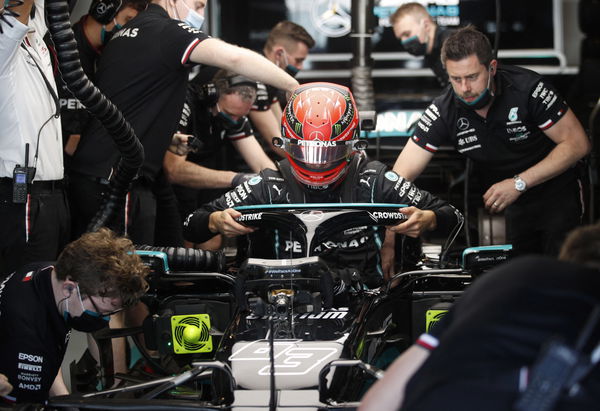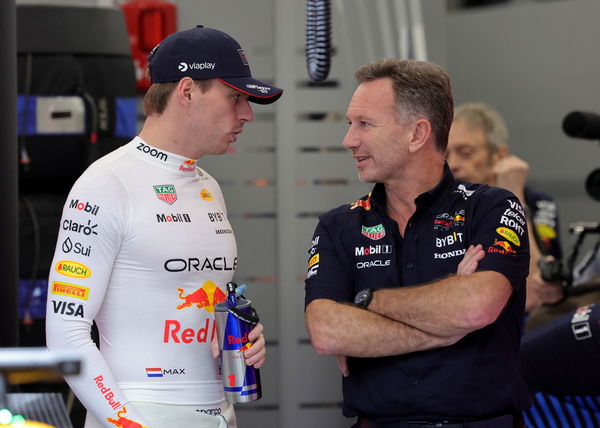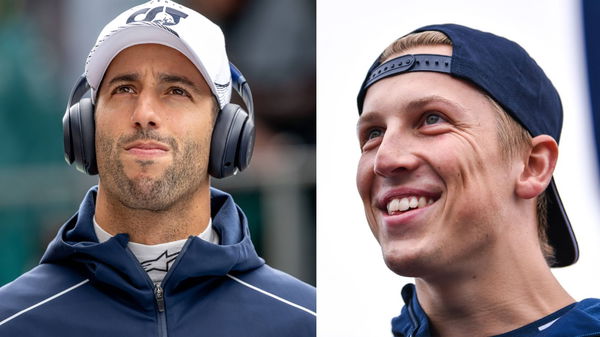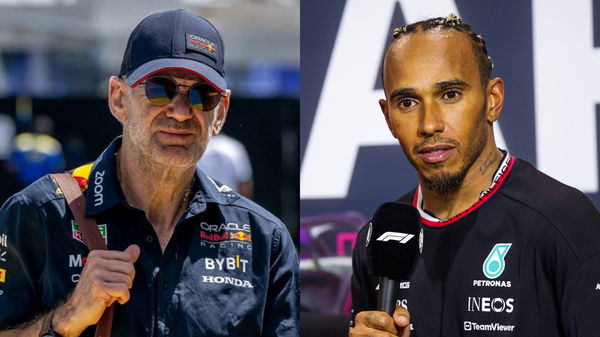About Cockpits in F1 Including Dimensions, Halo & Others

Follow Us

via Reuters
Formula One F1 – Young Driver Test – Yas Marina Circuit, Abu Dhabi, United Arab Emirates – December 14, 2021 Mercedes’ George Russell during testing REUTERS/Hamad I Mohammed
Cockpit in Formula One is what one would consider a workspace for the drivers. Hours and hours of factory work by hundreds of engineers ultimately result in their two distinctive F1 drivers almost laying back inside the cockpit and taking the powerful racing machine for an adrenaline-pumping drive seeking glory.
And by laying back, we don’t mean ‘relaxing’. Instead, F1 cars have the most aggressive seating position for the drivers with their feet positioned almost at the level of their head. Hence, amidst abundant specialties, here’s more about the cockpits in Formula One.
Why are F1 cars open cockpit?
ADVERTISEMENT
Article continues below this ad
F1 is indeed regarded as the pinnacle of open-wheel racing, and, hence, setting up a cockpit with a canopy for such machines would destroy the sport’s long-held tradition. This is indeed one of the biggest reasons why F1 has held back from shielding the drivers with glass.
A more practical reason is safety concerns. These cars are capable of going up in flames, be it due to a crash or other technical or mechanical failure. Hence, a closed cockpit would almost leave the drivers in jeopardy.
Trending

Max Verstappen “On Ice” as Return to China Goes Badly for Christian Horner and Co
April 19, 2024 10:58 AM EDT

Daniel Ricciardo To Be Replaced by Liam Lawson After Miami, F1 Pundit Dishes Out Harsh Verdict After Australian’s “Amateur Mistake”
April 17, 2024 11:14 AM EDT

Adrian Newey Hits Out at Climate Activist Lewis Hamilton’s Fuel Protest, Desperate to See V10 Engines Again
April 15, 2024 12:35 PM EDT

Taylor Swift’s Tortured Poets Department Sends F1 Fans Into a Frenzy: “Its a Fernando Reference”
April 19, 2024 09:43 AM EDT

Who are Zhou Guanyu’s Parents? Everything We Know About The Chinese Driver’s Family
April 16, 2024 02:07 PM EDT
Get instantly notified of the hottest F1 stories via Google! Click on Follow Us and Tap the Blue Star.

Follow Us

via Reuters
Formula One F1 – Abu Dhabi Grand Prix – Yas Marina Circuit, Abu Dhabi, United Arab Emirates – December 10, 2021 Red Bull’s Max Verstappen getting in his car before practice REUTERS/Hamad I Mohammed
For instance, consider the 2020 Sakhir GP incident; Do you think Romain Grosjean could’ve escaped the scene unscathed had his car sported a glass cover over the cockpit? Certainly not. And finally, another reason for the prioritization of open cockpits is driver identity. In addition, F1 drivers like to flaunt their unique helmet designs which subsequently helps a lot of audiences spot them on the track.
Why are F1 drivers called pilots?
It is a known fact that F1 is a European sport. And in several European languages, racing car drivers are generally regarded as ‘pilots’. Hence, this could be the reason why Formula One drivers, too, are referred to as pilots occasionally.
But, of course, with F1 spreading its fame across the world, the term driver over pilot is mostly prioritized.
Formula 1 cockpit safety
Imagine yourself driving a car at over 200 miles per hour with no protection whatsoever around you. Sounds scary, doesn’t it? Well, that’s how perilous the F1 cars were until the mid-2000s. One could practically see the drivers’ shoulders and parts of their upper body from the sides.
However, over the years, F1 has prioritized securing the lives of the drivers. How you might ask? Well, one, by strengthening the cockpit and extending the bodywork up to the halfway point of a driver’s head. Two, the arrival of the HANS (Head And Neck Support) device and removable headrest which assured the driver’s safety.

via Reuters
Formula One F1- Saudi Arabian Grand Prix – Jeddah Corniche Circuit, Jeddah, Saudi Arabia – December 4, 2021 Aston Martin’s Sebastian Vettel during qualifying Pool via REUTERS/Giuseppe Cacace
The latter even saved Kevin Magnussen‘s life at the 2016 Belgian Grand Prix where he spiraled out of control into the barriers just off the exit of Eau Rouge.
Of course, the increase in safety did come with a drawback; the drivers had much lesser lateral visibility. But, that’s a small price to pay for the immense level of safety that these components provide.
What is a halo in F1?
The discussions over the introduction of closed cockpits in F1 began halfway into the 2010s, especially after Jules Bianchi’s fatal crash in October 2014. However, many objected to it, reckoning closed cockpits would kill the sport’s heritage and the fact that it’s hailed as the pinnacle of open-wheel racing.
Hence, F1’s think tank had to come up with an idea that not only goes well with the group hoping for safety but also the group demanding the purity of the sport. This is where ‘Halo’ came into play! Halo is a protective barrier that obstructs large objects and debris from entering the cockpit.

via Reuters
Formula One F1 – Italian Grand Prix – Autodromo Nazionale Monza, Monza, Italy – September 12, 2021 Red Bull’s Max Verstappen and Mercedes’ Lewis Hamilton crash out of the race REUTERS/Jennifer Lorenzini TPX IMAGES OF THE DAY
Halo is F1 is made from rigid and lightweight titanium tubing and merges with the car’s chassis and weighs around 9kgs. What’s interesting is that halo can withstand the impact of a bus, according to Mercedes. Of course, when halo made its debut in 2018, there was an insane amount of hate towards it.
However, it was only at the Belgian GP that year that proved the importance of a halo cockpit. The lap 1 crash involving Fernando Alonso, Nico Hulkenberg, and Charles Leclerc clearly saved the latter-most driver’s life as the halo prevented the tire of Alonso’s McLaren from colliding with Leclerc’s head.
Watch Story: From Lewis Hamilton to the Miz: When F1 & WWE Crossed Over
Formula 1 cockpit dimensions
According to reports, it is mandatory that cockpits are a minimum of 850mm long and 450mm wide. Why you might ask? Well, the purpose of building such wide cockpits is to make sure that the drivers can climb out of their cars in no more than five seconds.
Formula 1 cockpit material
Cockpits are undeniably the strongest part of the entire Formula One car and why wouldn’t it be? The sole priority of the sport and its governing body is to keep the drivers safe no matter what. Well, here’s all about the monocoque, an armor-like body that includes the driver’s survival cell and cockpit.
The monocoque is wrapped around by “deformable crash-protection structures” that absorb energy during a high-intensity impact. In addition to that, there is also a 6mm thick layer made of carbon and Zylon, the kind of material that one can usually identify in armored vests.

via Reuters
Formula One F1 – Brazilian Grand Prix – Jose Carlos Pace Circuit, Sao Paulo, Brazil – November 13, 2021 Mercedes’ Lewis Hamilton before practice REUTERS/Ricardo Moraes
Hence, even in a crash where a car rams straight into the barriers, there is only a minimal chance that any kind of debris could penetrate through the monocoque.
ADVERTISEMENT
Article continues below this ad
Formula 1 cockpit view
For entertainment purposes, F1 has been bringing in a lot of unique and interesting data and visuals on live TV since 2020. Of course, there are the graphics on the halo depicting the driver’s position and speed and then, the tire life percentage on the corner of the screen.

via Reuters
Formula One F1 – Mexico Grand Prix – Autodromo Hermanos Rodriguez, Mexico City, Mexico – November 5, 2021 AlphaTauri’s Yuki Tsunoda in action during practice REUTERS/Edgard Garrido
Well, similarly, in 2021, F1 introduced something extremely amazing- helmet cam. Drivers had a tiny camera fitted inside their visor on the padding that offers the spectators a bird’s-eye view of the pilot.
ADVERTISEMENT
Article continues below this ad

Why Did Toyota Leave F1?
